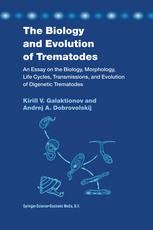

Most ebook files are in PDF format, so you can easily read them using various software such as Foxit Reader or directly on the Google Chrome browser.
Some ebook files are released by publishers in other formats such as .awz, .mobi, .epub, .fb2, etc. You may need to install specific software to read these formats on mobile/PC, such as Calibre.
Please read the tutorial at this link: https://ebookbell.com/faq
We offer FREE conversion to the popular formats you request; however, this may take some time. Therefore, right after payment, please email us, and we will try to provide the service as quickly as possible.
For some exceptional file formats or broken links (if any), please refrain from opening any disputes. Instead, email us first, and we will try to assist within a maximum of 6 hours.
EbookBell Team

0.0
0 reviewsThe book by K. V. Galaktionov and A. A. Dobrovolskij maintains the tra- tion of monographs devoted to detailed coverage of digenetic tr matodes in the tradition of B. Dawes (1946) and T. A. Ginetsinskaya (1968). In this - spect, the book is traditional in both its form and content. In the beginning (Chapter 1), the authors provide a consistent analysis of the morphological features of all life cycle stages. Importantly, they present a detailed char- terization of sporocysts and rediae whose morphological-functional orga- zation has never been comprehensively described in modern literature. The authors not only list morphological characteristics, but also analyze the functional significance of different morphological structures and hypothesize about their evolution. Special attention is given to specific features of m- phogenesis in all stages of the trematode life cycle. On this basis, the authors provide several original suggestions about the possible origins of morp- logical evolution of the parthenogenetic (asexual) and the hermaphroditic generations. This is followed by a detailed consideration of the various m- phological-biological adaptations that ensure the successful completion of the complex life cycles of these parasites (Chapter 2). Life cycles inherent in different trematodes are subject to a special analysis (Chapter 3). The authors distinguish several basic types of life cycles and suggest an original interpretation of their evolutionary origin. Chapter 4 features the analysis of structure and the dynamics of trematode populations and is unusual for a monograph of this type.